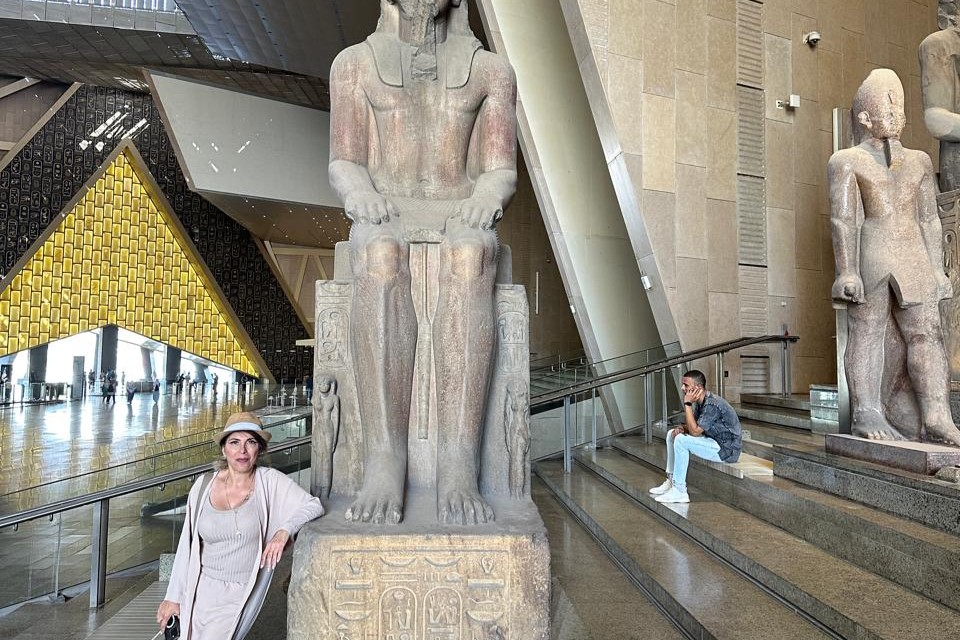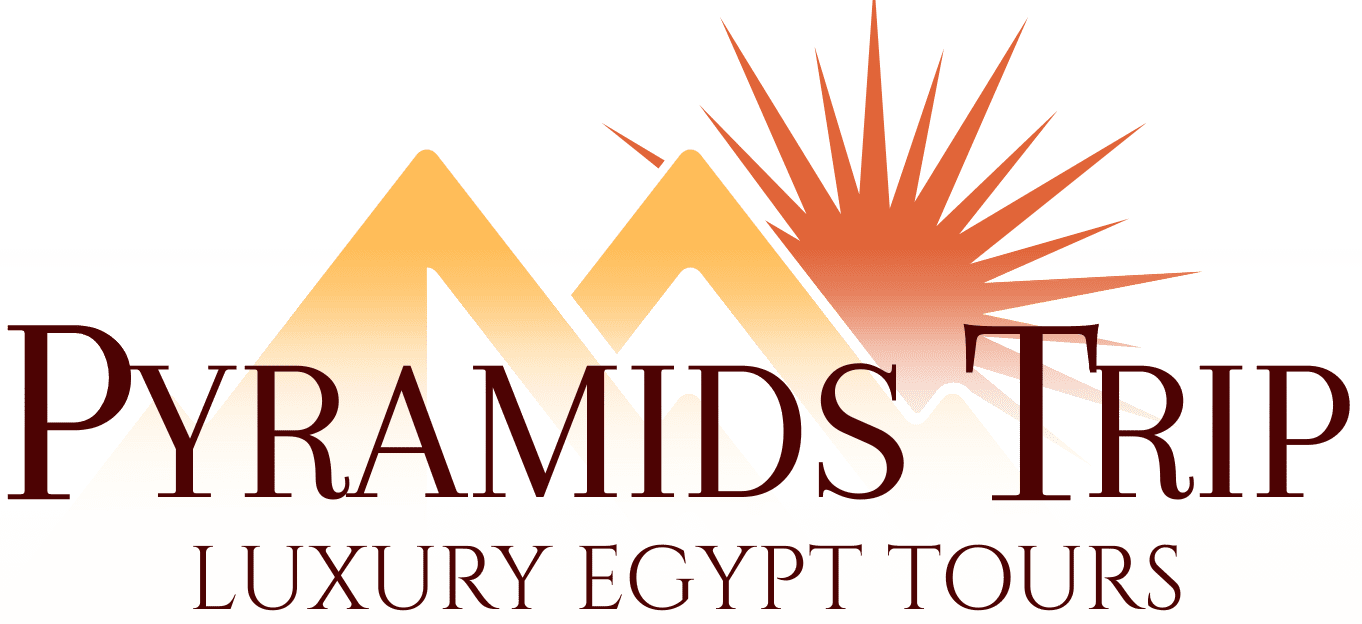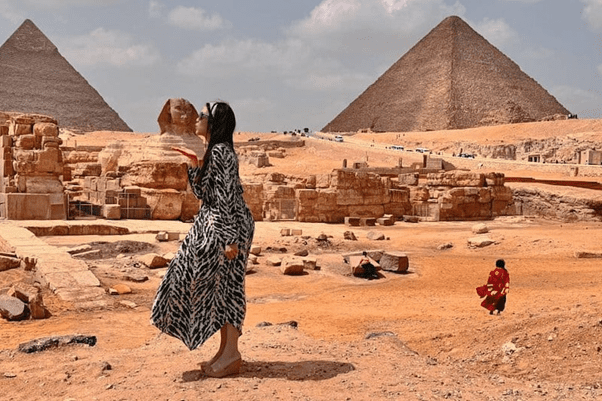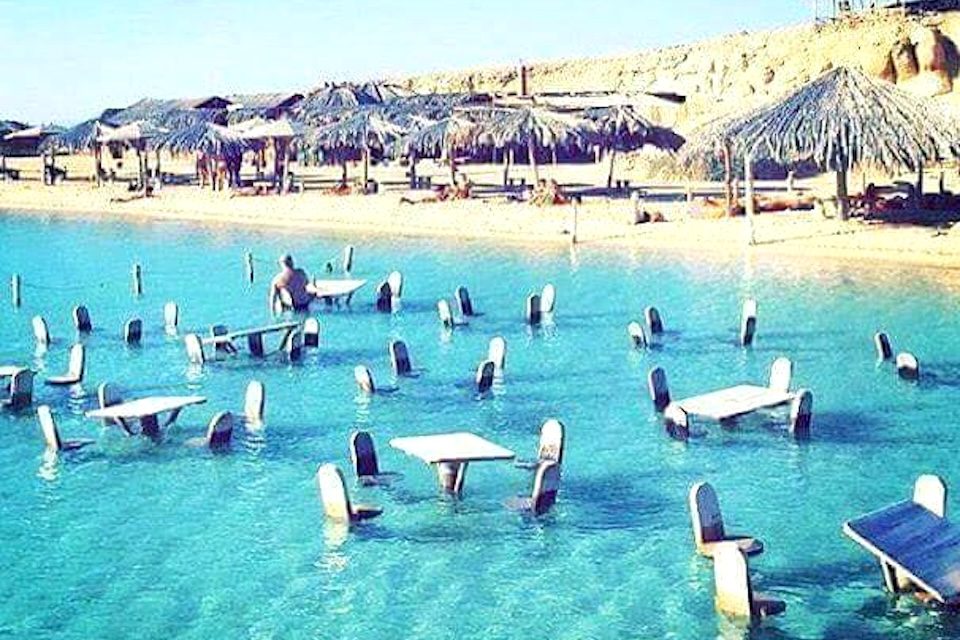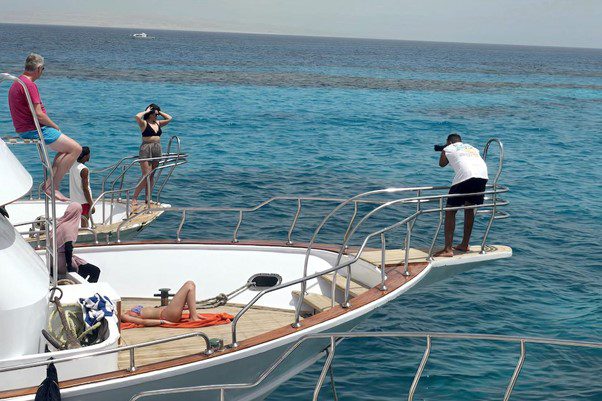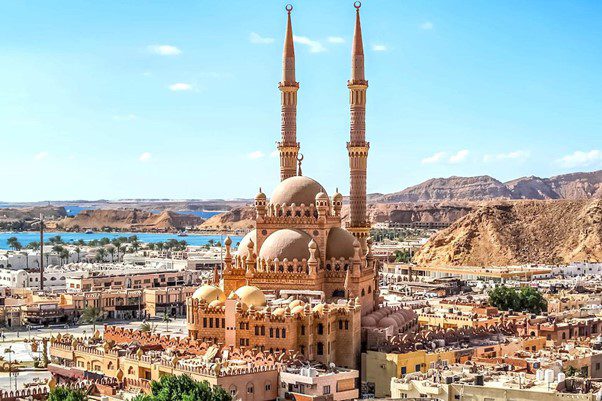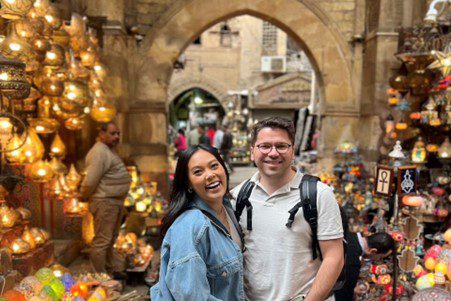
Many of you may be waiting for the Grand Egyptian Museum to open. Your wait is over now because it is expected that the Grand Egyptian Museum (GEM) will open fully on November 1, 2025. Well, Cairo’s Grand Egyptian Museum has had a very complicated journey. Plans for its opening have been delayed a number of times since 2012 because of difficulties with construction, regional conflicts, the pandemic, and multiple revolutions. It was anticipated that the museum would open on July 2, but again, that date had to be postponed because of conflicts between Israel and Iran. Now, the time has come to explore the history of Egypt through GEM, as it is expected that the $1 billion museum will finally be scheduled to open on November 1, 2025. Introduction to Grand Egyptian Museum (GEM) With the discovery of more ancient Egyptian treasures, it became important to establish a new repository to display them. This new repository is the Grand Egyptian Museum, or GEM, which is considered a great place to safely display ancient Egyptian treasures. It will showcase approximately 100,000 artifacts from Egypt’s long history, revealing truths of the ancient civilization. The museum is situated next to the Pyramids of Giza and has an exterior design that has been inspired by the pyramids themselves. The thing that makes it unique is the experience it offers. Visitors won’t just see antiques and statues, they will also enjoy attractive displays that showcase the artifacts in ways unlike any other museum in the world. The museum has a six-story staircase equipped with monumental artifacts, such as the ten statues of King Senusret I. It is the home to the Tutankhamun Gallery’s permanent exhibitions. It’s not only about a world-class exhibition space, it is considered an educational and cultural hub for Cairo. It has one of the largest conservation and research facilities in the world, and has 17 specialized laboratories that are attached to the main building through an underground tunnel. Is the new Egyptian Museum open yet? No, the Grand Egyptian Museum is not fully open yet, but it’s expected that the opening will be scheduled for November 1, 2025. It is partially open, where some facilities and galleries are already accessible to the visitors. How much is a ticket to the New Egyptian Museum? The ticket cost for entering the Grand Egyptian Museum (GEM) may vary based on visitor category and nationality. For example: For Egyptian citizens, the entry cost is around EGP 200 for adults, around EGP 100 for a child, and EGP 100 for a student and a senior. For Arabs or other nationalities, the entry cost for an adult may be around EGP 1,450, around EGP 730 for a child, and around EGP 730 for a student. For expatriates, the ticket cost for visiting the Grand Egyptian Museum is EGP 730 for adults, EGP 370 for a child, and EGP 370 for a student. This entry fee will give you a chance to explore the largest archaeological collections ever displayed in a single location. Which museum is better to visit in Cairo? Many of you may have already created a list of museums to visit in Cairo, which means it completely depends on your preferences and interests. However, nowadays, everyone is waiting for the Grand Egyptian Museum to open to explore ancient Egyptian treasures, statues, and antiques. It has well-organized exhibits that show a huge collection of artifacts, including several treasures from Tutankhamun’s tomb. How much did it cost to build the Grand Egyptian Museum? The Grand Egyptian Museum (GEM) costs roughly $1 billion to build. The establishment of this museum was made possible by international loans and donations, including assistance from Japan via the Japan International Cooperation Agency (JICA), as well as the Egyptian government. The investment covers the massive structure of a museum, advanced conservation labs, visitor facilities, and exhibition halls, making it one of the most ambitious museums in the world. Who built the Grand Egyptian Museum? Basically, the Irish architecture firm Heneghan Peng Architects created the design, which won the international design competition in 2003. Orascom Construction (Egypt) carried out the construction in partnership with Besix (Belgium). Together, these firms handled the large-scale project, combining and using the latest engineering with features that complement the Giza Pyramids. Will visitors get views of the Pyramids from GEM? Are you wondering: Can I get views of the pyramids from GEM? The answer is yes. You can get views of the pyramids from the GEM. This is because the museum is established just 2 kilometers from the pyramids and has large windows, allowing you to view the Giza pyramids. Through the Grand Staircase inside the museum, you can have an amazing view of the pyramids from the top. Should You Visit the Grand Egyptian Museum? Yes, you should absolutely visit the GEM for many reasons, including: It uses interactive displays to make Egyptian history feel vibrant. You will easily understand Egyptian history because the artifacts are arranged in chronological order. You will get the chance to see thousands of years of history. You will see how everything is presented through the actual flow and interactive exhibits. Conclusion So, it would be worth visiting the Grand Egyptian Museum. If you are visiting Cairo, then don’t forget to visit GEM to unfold Egyptian culture and history.

If you are looking for one of the Coldest Peninsulas of Egypt, you have landed on the right page. In this blog post, you’ll come to know about the coldest peninsula of Egypt. Let’s get started: Which is One of the Coldest Peninsulas of Egypt? The Sinai Peninsula is one of the coldest peninsulas of Egypt. It is a land of natural beauty and historical significance. It is a special and holy place that comes with the most peaceful and beautiful attractions on Earth. We are here to provide you with all the important facts and information you need about the Sinai Peninsula. Sinai is located between two vital seas. It has played an important role in human history. It has amazing places, from historic places like Mount Sinai and Saint Catherine’s Monastery to breathtaking coral reefs, beaches, and diving locations. The Sinai Peninsula has unique marine life, beautiful views, and parts of the Sahara Desert with amazing attractions. It provides everything required for a magical and memorable vacation. You can get in touch with the best tour operator in Egypt if you want to visit the Sinai Peninsula. Today, Sinai has become a popular travel destination in Egypt. Its coral reefs, natural beauty, deep religious history, and sea life make it truly special. Sinia Climate The climate in the Sinai Peninsula is sunny throughout the whole year. However, the weather can still be cold due to the high elevation and mountain landscape. Sinai is known as one of the coldest provinces in Egypt. During the winter season, temperatures in some cities and towns can drop to as low as −16°C (3°F). During the summer season, temperatures can rise to more than 40°C (104°F). The Sinai Peninsula is situated on the border between Egypt and the Gaza Strip, which makes it an important area. This helps explain why the Egyptian government has put a strong military and police presence throughout Sinai. There is also a big difference between nighttime and daytime temperatures. The days can be very hot, while the nights can be quite cold. This is a common feature of the desert environment found in many parts of Egypt, including Sinai. Is Sinai Safe to Visit? If we talk about whether it’s safe to visit Sinai, the answer is yes. You can safely visit Sinai, as it is a welcoming place for visitors from all over the world who are looking for a vacation full of excitement, adventure, and relaxation. The Peninsula has beautiful seaside resorts that provide some of the best sun-filled holiday experiences, and it is also home to many underwater wonders in the Red Sea. Despite this, the Sahara Desert in Sinai has amazing natural attractions that leave a long-lasting impression on everyone who visits. Top Destinations in Sinai Sharm El Sheikh Sharm El-Sheikh is a City of Peace, one of the most popular destinations in Sinai. It has amazing resorts that provide many different places to stay, along with a wide range of restaurants, cafes, and bars. Ras Mohammed National Park Ras Mohammed National Park is just 12 km from Sharm El-Sheikh. It is known as an underwater paradise. It is home to over 1,000 different species of fish and 220 types of coral reefs. Saint Catherine’s Monastery At the top of Mount Horeb, you can find one of the holiest places on Earth, where Moses received the Ten Commandments from God. The mountain’s height is 1,586 meters above sea level. The monastery was established by the order of the Byzantine Emperor Justinian I between 527 and 565 CE. Conclusion The blog shares an answer that the Sinai Peninsula is one of the coldest peninsulas of Egypt. You can visit this place safely by booking with a trusted tour company. If you are looking to book an Egypt tour, you can choose Pyramid Trips.

Taking a luxury Nile cruise is one of the most magical ways to experience the wonders of Egypt. From ancient temples to serene river views, the Nile delivers a timeless journey. But for first-time travelers, it’s natural to wonder what exactly makes a luxury Nile cruise worth the upgrade? Is the extra cost justified? Let’s walk you through the key benefits and features that truly elevate the experience, so you can decide with confidence. Why Choose a Luxury Nile Cruise Over a Standard One? While basic Nile cruise packages cover the essentials accommodation, meals, and sightseeing a luxury cruise transforms your trip into an indulgent, immersive escape. 1. Spacious Cabins with Nile Views Standard cabins can feel cramped. Luxury cabins, on the other hand, often come with private balconies, panoramic windows, and plush bedding. You’ll wake up to golden sunrises over the Nile something that’s worth every penny. 2. Gourmet Dining Onboard Forget basic buffets. On a luxury Nile cruise, you’re treated to à la carte menus prepared by top chefs, combining international flair with Egyptian flavors. From fresh seafood to authentic koshari, dining becomes part of the adventure. What’s Included in Luxury Nile Cruise Packages? Most luxury Nile cruise packages include several value-added services that make your trip smoother and more enjoyable. Private Guided Tours You won’t be rushed through iconic sites like Karnak Temple or the Valley of the Kings in a large group. Instead, experienced Egyptologists lead small private tours, ensuring deeper insight and more flexibility. Onboard Spa and Wellness Many high-end cruise ships feature spa services, jacuzzis, or massage rooms. After a long day of exploring temples under the sun, nothing beats a rejuvenating treatment overlooking the river. Cultural Experiences Luxury cruises often offer exclusive experiences like sunset felucca rides, belly dance shows, or live Nubian music on deck curated for those seeking more than just sightseeing. When Is a Luxury Upgrade Really Worth It? If you’re celebrating a special occasion, traveling as a couple, or simply value comfort and privacy, the upgrade to luxury is worth it. Many travelers who’ve taken Nile cruises in Egypt say the added service and personalized care made the trip unforgettable. Pro Tips for First-Time Travelers • Book Early: Luxury Nile cruise slots fill up quickly, especially during peak season (October to April). • Choose the Right Itinerary: Cruises from Luxor to Aswan (or vice versa) are most popular. Look for packages that include Abu Simbel for a full experience. • Compare Packages: Not all “luxury” cruises are equal. Review inclusions like private transfers, onboard amenities, and sightseeing depth before booking. Ready to Book Your Luxury Nile Cruise? Whether you’re a first-timer or seasoned traveler, a luxury Nile cruise offers an elegant way to discover Egypt’s ancient legacy. From world-class comfort to personalized tours, it’s an upgrade that pays for itself in memories. Explore our curated Nile cruise packages to find one that suits your dream journey. Final Word: Luxury Nile cruises are not just about upgraded rooms they’re about an upgraded experience. If your goal is to travel Egypt in style, peace, and full immersion, then yes it’s absolutely worth the upgrade.

When planning a dream getaway along the Nile, one of the biggest decisions you’ll make is choosing between two iconic cruise routes Lake Nasser or the classic Luxor–Aswan Nile cruise. Both offer unforgettable experiences, rich history, and stunning scenery, but they differ in pace, atmosphere, and the kinds of sights you’ll explore. Whether you’re a history enthusiast, a leisure seeker, or someone chasing an off-the-beaten-path experience, knowing the difference can help you pick the Nile cruise that perfectly matches your travel style. The Classic Choice: Luxor–Aswan Nile Cruise A Journey Through Ancient Egypt’s Heart The Luxor–Aswan Nile cruise is one of the most popular options for travelers in Egypt. These cruises typically span 3 to 5 days, taking you through some of the country’s most celebrated ancient treasures. You’ll visit timeless landmarks like the Valley of the Kings, Karnak Temple, Luxor Temple, and Philae Temple in Aswan. The route is lined with historical sites that define ancient Egyptian civilization, making it ideal for those who want a deep dive into Egypt’s pharaonic past. Accessible and Convenient Because Luxor and Aswan are well-connected by flights and trains, this route is more convenient for most travelers. There’s also a wide range of Nile cruise packages available from budget-friendly options to ultra-luxury Nile cruises, complete with spa treatments, fine dining, and sunset decks. This route is great for first-time visitors to Egypt who want a well-rounded, guided experience along the Nile without venturing too far off the tourist path. The Serene Escape: Lake Nasser Cruise A Quieter, More Intimate Experience Lake Nasser cruises offer a more peaceful alternative, perfect for travelers looking to escape the crowds. These cruises sail across one of the world’s largest man-made lakes, stretching between Aswan and Abu Simbel near the Sudanese border. Because the route is less traveled, you’ll enjoy a more private and serene setting ideal for photographers, nature lovers, or couples seeking a relaxing retreat. Ancient Nubian Wonders Lake Nasser cruises showcase the rich heritage of Nubian monuments, many of which were relocated to save them from flooding during the construction of the Aswan High Dam. One of the major highlights is the Abu Simbel Temples, carved directly into rock and dedicated to Ramses II and Queen Nefertari. You’ll also explore lesser-known but equally fascinating sites like Kalabsha Temple, Wadi El Seboua, and Amada Temple, offering a deeper connection to Egypt’s lesser-explored history. Which Cruise Suits You Best? If you’re drawn to famous archaeological wonders and prefer a well-paced itinerary packed with temples and tombs, the Luxor–Aswan route is the clear winner. It’s ideal for history lovers and those booking their first Nile cruise in Egypt. On the other hand, if you’re looking for a more tranquil, luxurious escape with unique views and uncrowded sites, a Lake Nasser cruise could be your perfect match. Final Thoughts Both routes promise breathtaking scenery, enriching history, and world-class hospitality. We offer carefully curated Nile cruise packages that suit every traveler whether you’re after cultural immersion, romantic relaxation, or a bit of both. So, what’s your style? Whichever route you choose, a luxury Nile cruise in Egypt is a journey you’ll never forget.

So, you’ve landed at Cairo International Airport, and you’ve got hours to kill. Frustrating? Sure. But that doesn’t mean you have to sit there miserable and bored. Whether you’re stuck inside the terminal or lucky enough to venture out for a bit, there are ways to make the most of your layover. Here’s the no-nonsense, real-world guide—no sugar-coated travel blog fluff. First Things First: Can You Even Leave the Airport? Before you start planning a quick pyramid detour, get a grip on two important things: 1. Are You Allowed to Leave? Depending on your nationality, you might be able to get a visa on arrival or apply for an e-visa before your trip. If you don’t have the right visa—or if your layover is too short—you’re better off staying put in the airport. No point risking it and missing your next flight. 2. How Much Time Do You Actually Have? If you’ve got 6+ hours, great—you have options. Less than that? Don’t even think about leaving the airport. Cairo traffic is brutal, and trying to do too much in too little time can turn into a travel disaster real fast. Pro tip: Not sure about your visa status or want to plan a quick outing? Reach out to a reliable local travel agency like Pyramids Trip. They can guide you or even organize a mini tour that works within your schedule. Option 1: Staying Inside the Airport (Visa or Time is a No-Go) Okay, so you’re airport-bound. It’s not the worst thing—Cairo Airport has a few solid ways to pass the time. 1. Head to a Lounge Terminal 3 has a few decent lounges with Wi-Fi, snacks, drinks, and even showers. Some accept walk-ins, or you can book in advance if you’re feeling fancy. Definitely better than camping out on a metal bench near your gate. 2. Try Some Local Bites Skip the fast food chains and look for something local. Grab a plate of koshari or a warm shawarma wrap. You’ll feel like you got a tiny taste of Egypt—without even leaving the airport. 3. Browse Duty-Free Like You Mean It The duty-free section is surprisingly big. Whether it’s perfumes, snacks, or last-minute souvenirs for people you forgot, it’s a decent way to kill time (and maybe a bit of your budget). Option 2: You’ve Got Time and a Visa—Go Explore! If you have at least 8 hours and you’ve cleared immigration, don’t just sit there—make it count. 1. Hit the Classics: Giza Pyramids or the Egyptian Museum The Pyramids and Sphinx are about an hour away, depending on traffic. You can see them, snap a few photos, and be back in time if you’re efficient. Prefer something closer? The Egyptian Museum in downtown Cairo is packed with ancient treasures, including King Tut’s famous gold mask. 2. Chill by the Nile or Sip Some Mint Tea Want something low-key? Take a short drive into town, find a café, and enjoy some Egyptian mint tea while people-watching. A peaceful walk along the Nile River is also a great way to unwind and get a feel for the city without rushing. 3. Use a Trusted Tour Operator Cairo traffic is wild, and you don’t want to gamble with your connection. Book a quick layover tour through a reliable agency like Pyramids Trip. They’ll handle pickup, guide you to the sights, and get you back to the airport with plenty of time to spare. Quick Tips to Make Your Layover Smoother • Track your flight and check for any last-minute gate changes. • Watch the traffic if you’re going out—it’s no joke. • Keep your passport and documents handy at all times. • Stay connected with your airline in case anything changes. Final Thoughts A Cairo layover doesn’t have to be a travel horror story. With the right plan, it can turn into a fun little detour—or at least a comfortable pause in your journey. Whether you’re stuck inside or heading out for a quick tour, make it work for you. And if you’re not sure where to start, give Pyramids Trip a shout—they’ll help you make the most of your time in Egypt.
A Nile cruise is more than just a holiday it’s a journey through the heart of ancient Egypt, where every bend of the river tells a story. If you’re planning a trip in 2025, one of the first questions you’re likely asking is: how much does a Nile cruise cost? The good news? There’s something for every type of traveler from those looking for a cost-effective adventure to those seeking a luxurious escape. Here’s a simple breakdown to help you understand what you get at different price points and choose the right cruise experience for your budget and travel style. Budget Cruises: See the Best of the Nile Without Overspending Traveling on a budget doesn’t mean missing out. Budget-friendly Nile cruises are a great way to see iconic sites like Luxor, Aswan, and the Valley of the Kings without breaking the bank. In 2025, prices for these cruises generally range from $300 to $500 per person for a 3 to 4-night trip. You’ll typically get: • Comfortable twin or double cabins • All meals included (usually buffet style) • Guided group tours to the main attractions These cruises offer excellent value and are ideal for solo travelers, students, and anyone looking to explore the Nile’s wonders affordably. If you’re just starting to look, check out some of our handpicked Nile cruise packages that combine quality and value. Mid-Range Cruises: A Step Up in Comfort and Experience For those who want a bit more comfort without splurging, mid-range cruises strike the perfect balance. Prices in this range generally fall between $600 to $900 per person for a 4 to 5-day itinerary. Here’s what you can expect: • Well-furnished cabins, often with Nile views • Professional guides and smaller group sizes • More flexible itineraries and higher service standards • Additional onboard amenities like spas or evening entertainment Mid-range options are especially popular among couples and families who want a relaxed, well-rounded travel experience. Many of these cruises cover all the major highlights and give you just enough luxury to feel pampered without going over budget. Luxury Cruises: Timeless Elegance on the River If you’re looking for a once-in-a-lifetime travel experience, a luxury Nile cruise offers unmatched elegance and exclusivity. These cruises range from $1,200 to $2,500+ per person in 2025, depending on the cruise line, length, and itinerary. Luxury cruises often include: • Spacious suites with private balconies • Fine dining and attentive butler service • Private guided tours and exclusive access to historical sites • Onboard facilities like spas, lounges, and pools The experience is personalized, relaxed, and designed to immerse you in the beauty and history of Egypt in total comfort. Explore our most requested luxury Nile cruise packages for 2025 crafted for travelers who appreciate detail, culture, and comfort in equal measure. Choosing the Right Cruise for You When selecting your cruise, it’s important to consider more than just the price. Think about what matters most to you comfort, itinerary, flexibility, or exclusive experiences. The beauty of Nile cruises in Egypt is that they offer a wide range of options, allowing you to match your travel vision with the right package. And remember, booking early not only gives you better rates but also more choices when it comes to cabin selection and seasonal departures.

Thinking of escaping Cairo for the day? Alexandria is a top-notch choice—and taking the train makes it even better. It’s budget-friendly, surprisingly relaxing, and gives you a scenic ride through Egypt’s countryside before you even reach the coast. Let’s break it all down—real talk, timetables, costs, and a few street-smart tips to help you make the most of your Alexandria adventure. Why Take the Train to Alexandria? Sure, you could drive—but Cairo traffic is no joke. The train ride is part of the experience: in about three hours, you’ll glide past lush green fields, small villages, and the beautiful Nile Delta. No car horns, no GPS stress. Just you, some snacks, your playlist, and peaceful views out the window. And once you’re in Alexandria? Sea breeze, ancient sites, and Mediterranean charm await. Train Schedules: What’s the Best Option? Trains from Cairo to Alexandria run throughout the day—starting early morning and continuing until late at night. Here’s what to look for: • Spanish (Special Class) Trains: Fast, comfortable, air-conditioned, and a bit more polished. Tourists love these for a reason. • Regular First-Class Trains: Still decent, and a great budget option. Maybe not luxury, but definitely doable for a day trip. Suggested departure: Around 7:00 AM if you want a full day in Alexandria. Return trip: Between 5:00 PM and 7:00 PM works well for most travelers. Ticket Prices: Surprisingly Affordable • Spanish Train (Special Class): 100–150 EGP (~$3–5 USD) • Regular First Class: 80–100 EGP (~$2.50–3.50 USD) You can buy tickets at the station, but lines can be long and chaotic—especially in the morning. If you prefer a smoother experience, ask a local travel agent or tour service like PyramidsTrip to book your tickets and transfers. What to See in Alexandria in One Day You can cover a lot in a single day if you plan right. Don’t miss: • Citadel of Qaitbay – Built on the site of the ancient Lighthouse of Alexandria. Instagram-worthy and full of history. • Bibliotheca Alexandrina – A stunning modern library and cultural hub. Worth it even if you’re not a bookworm. • Montaza Palace Gardens – Gorgeous royal gardens with a sea view. Great for a walk or picnic. • Stanley Bridge & the Corniche – Perfect for a sunset stroll or that dreamy selfie with the sea in the background. Tip: Alexandria is full of cafés. If you get lost in one for an hour or two? Totally valid. Quick Tips from Locals • It’s breezy: Even in summer, Alexandria can feel cool—especially near the sea. A light jacket can come in handy. • Fridays = slow starts: Friday is Egypt’s weekend, so some museums or attractions may open late or close early. • Hate logistics? Let a local tour company like PyramidsTrip handle your transport, tickets, and timing. Saves a lot of hassle, especially for first-timers. Final Thoughts An Alexandria day trip by train is one of Egypt’s best-kept travel secrets. You get a mix of history, coastlines, and calm—all without spending much. Whether you’re snapping photos by the sea or sipping mint tea with a view, it’s a day well spent. Just don’t forget sunscreen, a good playlist, and some room in your camera roll. Trust us—you’ll need it.

Ramadan is a sacred and spiritual month for Muslims around the world. If you’re planning a trip to Egypt during this time, it’s important to understand how Ramadan can shape your travel experience. While Egypt remains a welcoming destination, travelers might notice subtle but meaningful changes in the daily rhythm, especially in Egypt tours packages designed around this holy season. What to Expect During Ramadan in Egypt During Ramadan, most locals fast from sunrise to sunset. This means that many restaurants and cafes remain closed during the day, with most activity picking up after the evening call to prayer. Tour packages adjust to these cultural rhythms, offering travelers a chance to experience Egypt in a more authentic and peaceful way. If you’re exploring historical sites like the Pyramids of Giza or the Egyptian Museum, you’ll find these attractions open but with adjusted hours. Many tour operators plan early morning visits or late afternoon tours to accommodate both local customs and traveler comfort. How Egypt Holiday Packages Adapt Tourism doesn’t stop during Ramadan—in fact, it can be a special time to visit. Many Egypt holiday packages include cultural activities like attending an Iftar (evening meal) with local families or watching traditional music performances that come alive after dark. Hotels and resorts continue to offer full services, and private guides often provide extra flexibility to ensure travelers enjoy their journey without discomfort. Transport services, Nile cruises, and day trips operate normally but might shift schedules slightly. Unique Ramadan Experiences for Tourists One of the most enriching aspects of visiting Egypt during Ramadan is experiencing the festive nights. The streets are beautifully lit, with lanterns (fanoos) hanging from balconies, and bazaars bustling with life after sunset. Your Egypt tours package might include special evening excursions to enjoy the local food markets and street performances in places like Cairo’s Khan El Khalili bazaar. A Time for Cultural Connection Rather than being a limitation, traveling during Ramadan offers a chance for deeper cultural understanding. Tourists are often welcomed warmly and are encouraged to participate in local traditions respectfully. It’s a time when hospitality is heightened, and locals are eager to share their culture and values with visitors. Whether you’re a solo traveler or coming with family, choosing the right Egypt tour package during Ramadan ensures you experience the country in a unique and meaningful way. Just be prepared for a slightly slower pace—and some unforgettable evenings under the stars.

If you really want to experience Cairo beyond the pyramids (don’t worry, you can go back later), head downtown. This part of the city is chaotic in the best way: honking cars, the smell of grilled kebabs in the air, and buildings so full of character they practically talk back. It’s gritty, loud, and full of life—and most importantly, it’s where Cairo’s real food scene lives. Forget overpriced tourist restaurants with English menus. The real flavors are tucked away in fogged-up windows, behind crowds of hungry locals, or on street corners that don’t show up on TripAdvisor. Why Downtown Cairo is a Foodie’s Paradise Downtown Cairo is the heartbeat of the city. Sure, the historic buildings and vintage architecture are beautiful—but the real magic is in the food. Most places don’t even have signs, just regulars who’ve been coming for years. If you’re unsure where to start, follow your nose—or the longest line of locals. And if you’re new to the area or your Arabic isn’t quite there yet, consider booking a local guide (like the ones from Pyramids Trip). They’ll lead you to hidden gems and keep you from falling into tourist traps. Local Cafés Worth Finding Café Riche – A Slice of Cairo History Located on Talaat Harb Street, Café Riche is an institution. Step inside and you’ll feel like you’ve time-traveled. The creaky floors, vintage decor, and walls heavy with history are just the beginning. This place has hosted everyone from revolutionaries to poets. Grab a strong cup of Egyptian coffee and soak in the nostalgia. Eish + Malh – Old Meets New Tucked away on Hoda Shaarawi Street, Eish + Malh blends Cairo’s soul with a modern twist. It’s the kind of place where creatives hang out, laptops open, coffee flowing. Their menu mixes Egyptian classics with global flavors—think shakshouka for breakfast, and Neapolitan-style pizza for dinner. Great for chilling, people-watching, or catching up on journaling your Cairo adventures. Street Food Spots That Locals Swear By Felfela – Legendary Egyptian Falafel Cairo has no shortage of taameya spots (Egyptian falafel), but Felfela is a favorite. Crispy on the outside, green and herby inside, served in fresh baladi bread with tahini—it’s the kind of simple, cheap street food that stays with you. Skip the hotel breakfast and come hungry. El Abd Patisserie – Dessert Heaven If you’ve got a sweet tooth, El Abd on Talaat Harb is your dream come true. Known for classic Egyptian desserts, you’ll find everything from syrup-soaked basbousa to rich rice pudding and flaky konafa. Buy a box, pretend you’ll share, and then devour it on your walk back. We won’t judge. Tips to Find the Real Spots It’s easy to miss the best spots if you don’t know where to look. Downtown is a maze, and many of these place’s blend into the scenery. The safest bet? Hire a local guide. Tour operators like Pyramids Trip can take you off the beaten path, introduce you to authentic eats, and tell the backstories that make the food taste even better. Final Word Downtown Cairo is messy, noisy, and utterly delicious. It’s where you’ll find cafés older than most cities, street food that could ruin fast food for you forever, and an energy that’s pure Egypt. Take a break from the postcard landmarks and eat where the locals do. Trust us—it’s these moments you’ll remember long after your trip ends.
